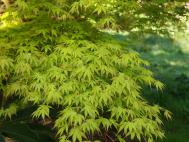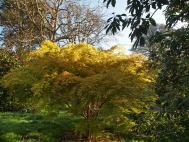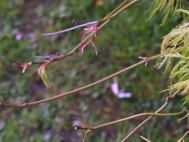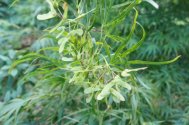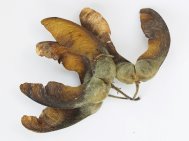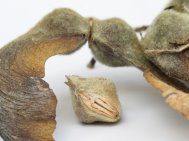- Shop Now
- Burncoose Specialities
- This Month
- Offers & Promotions
- RHS Chelsea Flower Show 2024
- 40 years at Burncoose
- Engage With Us
- Information, Help & Advice
- About Us & Our Services
- Terms & Conditions
- Log In / Register
Chapters
Acers - Care Guide
Garden Cultivation
a) Acid or Alkaline
All maples will grow in acid soil but not all will grow in chalky or alkaline soils. Species of Japanese maples are normally lime haters. Some Chinese maples originate from areas with alkaline soil as do several American species. The list is too complex to go into here but, strangely, Acer palmatum varieties seem to do as well in acid soil as alkaline or broadly neutral soils.
b) Hardiness
Most maples are perfectly hardy even if the new growth on Acer palmatum varieties is not. There are a few species, particularly the few evergreen ones, which come from warmer climates in Taiwan and Southern China, which are best grown only in the West Country but, there are relatively few of these, and they are only likely to be sold by a few specialist acer nurseries.
c) Positioning
Cool dappled shade with shelter from cold north and east winds or westerly gales is what most acers prefer. The new growth is especially tender on Acer palmatum varieties (and emerges very early in the year) although the plant is not so it is best to avoid frost pockets and, for reasons I will explain, relating to pests and diseases, to also avoid full sun at least as far as Acer palmatum varieties are concerned. Variegated foliaged acers need the most care. Afternoon sun will simply scorch the leaves. If this happens to a young plant it is best to dig the plant up and take it into the greenhouse to let it recover under the bench in partial shade. Acer palmatum ‘Ukigumo’ and the other variegated Acer palmatum varieties such as ‘Butterflies’ are particularly prone to scorching and should always be grown in shade.
d) Garden Cultivation
In an ideal situation Acer palmatum should have a slightly acidic, sandy, well drained soil that does not dry out in summer or become waterlogged in winter. Acers have shallow fibrous root systems which benefit from an annual mulch of organic matter. This also helps avoid wilt.
e) Pot Cultivation
Acer palmatum varieties adapt well to life in a pot providing the roots are kept moist and have a good drainage and aeriation. Crocks in the bottom of the pots are a good idea. Loam based compost such as John Innes No 2 is best together with a bark mulch to help avoid water loss. Watering twice a day in hot periods is essential. Feed with a balanced proprietary fertilizer in spring just as the leaves emerge.
Repot every 3 – 4 years in spring well before the first new growth emerges, - this means effectively in February or early March.
f) Pruning
In the main acers do not need or like pruning. If any pruning is undertaken it should only be done to improve their overall shape and to encourage healthy growth. Young Japanese maples, for instance, often produce single new shoots in one direction which, if not cut back, will grow on to create an unbalanced plant. Tree acers require a good leading shoot. Species such as Acer davidii often lose their leader and produce two side shoots instead. It is best to cut out one of these side shoots so that the other will become the new leader. Pruning is best carried out when the sap is falling in late summer or autumn. Acer negundo varieties will produce better coloured young foliage in spring if the new growth is trimmed back in mid autumn.
Pests & Diseases
1. Leaf Scorch
When water is lost from the leaves faster than the roots can take it up you will get scorching of the leaf tips. This is the commonest cause of problems with acers and one which is quite hard to explain because people naturally assume that there is something wrong with what they have bought. Leaf scorch can be caused by inadequate watering, by allowing the plant to dry out, or, most commonly, because the plant is in too hot and windy a position to start with. Leaf scorch is a combination of factors and it is not unusual for some of our plants to suffer in August if we are not vigilant. However, do not confuse leaf wilt with the early onset of Autumn. Acer palmatum varieties leaf up before almost all other trees in spring and they drop their leaves very early as well, especially as young plants, so don’t worry if they look untidy in September – it’s quite normal and will not effect the success and development of the plant next spring.
2. Wilt- a maple parasite
We will refer to this problem in the context of grafting but it is a wider problem. Verticillium is a fungal disease which can live on roots of plants other than acers and survive for many years. In some instances an attack of wilt may cause part of a plant to collapse quickly.In other instances it may just cause a little die back from the tips.It is not at all unusual for young acer palmatum varieties which are correctly grafted onto sturdy rootstocks to shake off this disease after a few years so do not worry about minor die back in the first year or two after planting while the plant gets established.
3. Aphids and Sooty Moulds
Aphids are often a problem in spring and early summer. We always keep a special lookout in the nursery for black aphids on the tips of the new shoots in April. These infestations can cause leaves and shoots to become misshapen and stunt growth. The aphids produce a sweet sticky secretions on to the lower leaves which in turn grow a sooty black mould or fungal infection on the leaves below. Proprietary pesticides which are either systemic or contact insecticides sprayed on every 2 – 3 weeks in spring can quickly control the problem. However sharp eyes and nimble fingers can also squash the problem before it arises.
4. Scale and Mites
Scale insects can also attack acers as can red spider mite. Scale insects appear in small clusters surrounded by what looks like white wool. They feed on the plants sap and secrete a honey dew substance which also grows sooty mould. Hand squashing these insects before the problem develops and insecticide is again the answer. In especially dry times, and particularly under glass, red spider mite infestations can cause discolouration of the leaves. Spraying is again necessary to control the problem but a damper environment will reduce the level of infestation. If a plant is badly infected in a greenhouse or tunnel remove it from its neighbours and stand it outside in the shade.
5. Rabbits and Squirrels
Young plants which are not surrounded by wire netting will be prone to nibbling by rabbits who try to gain nutrients from the bark especially in late winter. Squirrels are a particular problem in more mature acers where they strip the outer bark for their drays or for nutrients. Where damage is minor the bark will re-grow and cover the wounds.However, major losses of branches and misshapen trees are more often the end result. The best control for squirrels is not trapping or shotguns but a proprietary and perfectly legal squirrel poison obtainable under license from agricultural and forestry merchants and used in the breeding season.
Propagation
1. Seed
Generally seed is easy to harvest in Sept-Oct and should be collected slightly green. However, you should be aware that several species produce sterile fruits which may look very inviting but which will not germinate. Acer griseum is notorious for this. Several species are dioecious in that a solitary tree cannot produce viable seed so, again, you can be on an impossible mission.
Seed should be kept cool and fresh. Plastic bags are useless and paper bags much better. Seed must not be left in the sun to dry as you would with say, rhododendron seed. Seed can also be stored successfully in sharp sand.
Sow in trays or beds. Sandy soil should have a pH of 5.5, loamy soil a pH 6.0 or peaty soil a pH of 4.5. Good garden soil may be added but the seedbed must be well drained. Seed must not be sown too deeply and never deeper than the diameter of the nutlets. The seedlings will need protection from strong sunlight to avoid scorching.
Seedlings may be dug up and potted on only when fully dormant in late winter or early spring.
Acer seeds have ‘wings’ to enable them to travel distances from the mother tree in wind when ripe and ready to fall. Collect them only when they turn from green to brown.
2. Cuttings
Softwood cuttings are a second method of propagation of some acer forms but this is not easy. June – July is the best time to take cuttings. You can try to take cuttings in Feb- Mar from stock plants brought into early growth in the greenhouse but these seem to die off repeatedly during the winter.
The problem with trying to grow Acer Palmatum varieties from cuttings is that ‘wilt disease’ causes enormous losses. Plants grown on their own roots are far more susceptible to this than those grafted onto specie rootstocks. Burncoose do import some commoner Acer Palmatum varieties from New Zealand on their own roots (although these are commonly grown from seed) and we do often get a high casualty rate during the first winter.
3. Grafting
This is the most common technique for propagating acers and side grafting is the most common technique. Basically one has to select a suitable rootstock which must be a seedling of the parent species. Rootstocks are brought into the greenhouse and all the leaves are removed at the time of grafting so that sap flows instead into the graft. The grafts are kept in a greenhouse for 4-6 weeks before being hardened off outside and the top of the rootstock is then removed. Grafted plants can then be grown on in field situations. Grafting is a very difficult business fraught with traps for the unwary or amateurs.
Our Acer palmatum plants come mainly from New Zealand as bare rooted plants of 3-4 feet in height in late July. The roots are trimmed back hard. We then repot them after a week or so in transit. Great care and drenching is needed to avoid wilt. The plants re-grow leaves quickly then harden off and drop again by Christmas. The plants are however only saleable after they have been with us for 9 – 12 months and hence the high price of grafted plants which reflects the horticultural skills and time involved as well as the inevitably high loss rate.
We have more detailed 3-part article on collecting, storing and planting seeds
Further Reading
Further reading on the Caerhays website, a lecture about Acers by Charles Williams, Burncoose Nurseries.
Further reading and images in the Caerhays Garden Diary - Acers.


